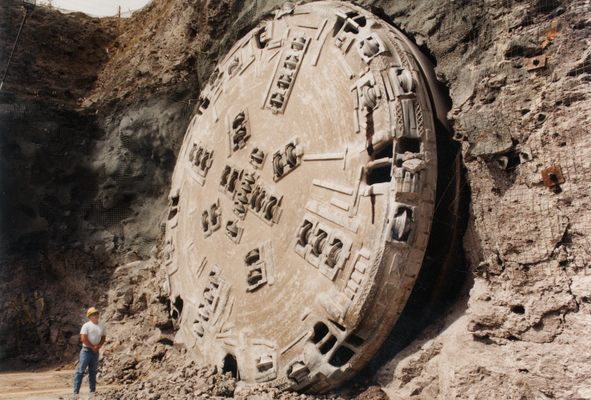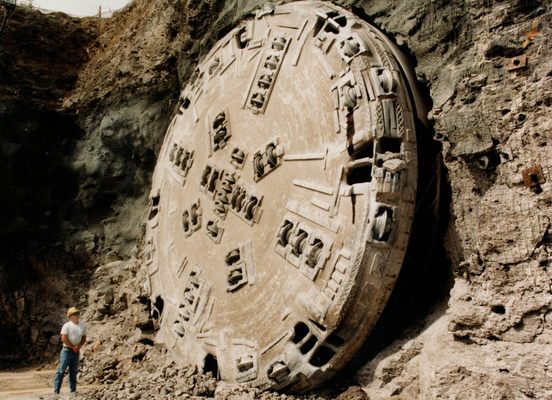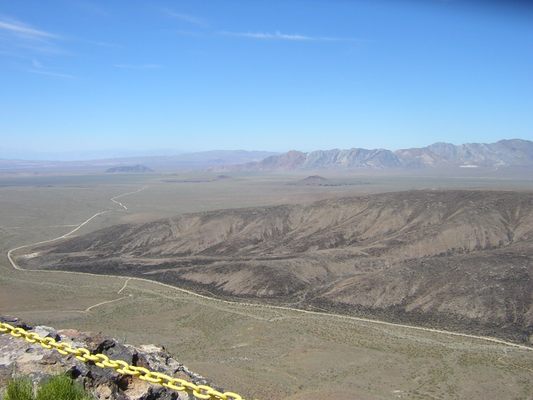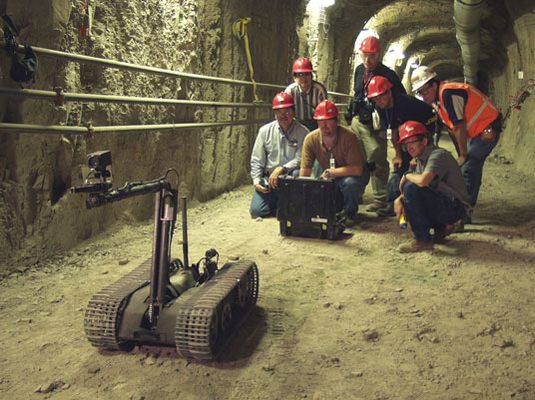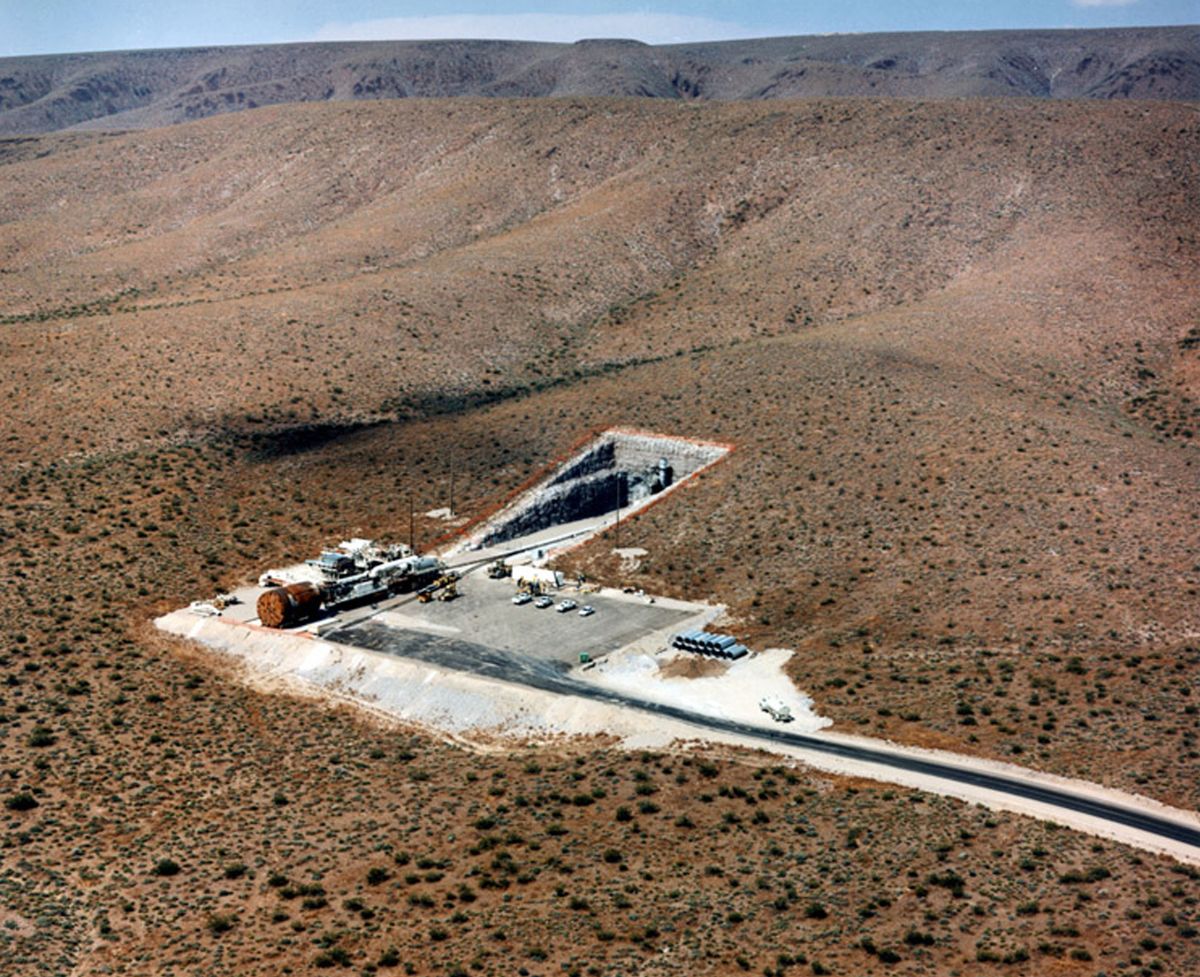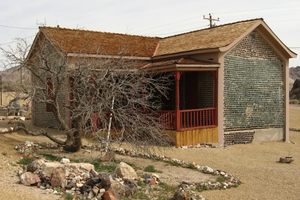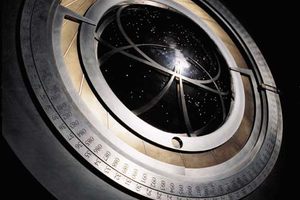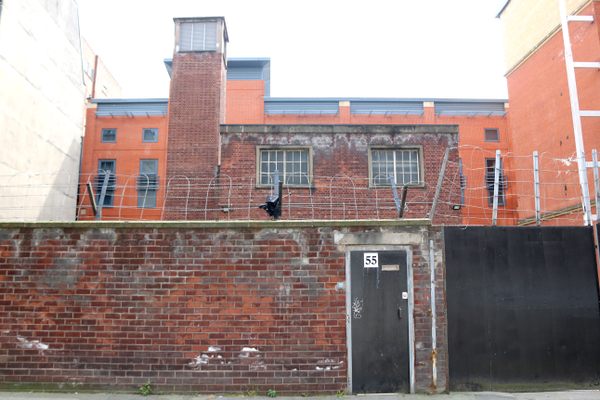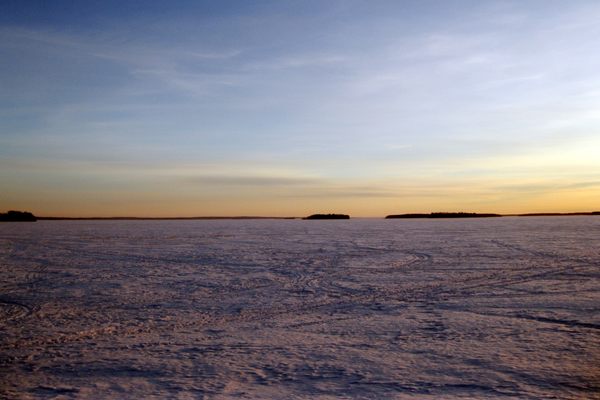About
Yucca Mountain in southern Nevada is more a ridge than a mountain. Created as deep volcanic tuff deposited by an extinct supervolcano (or caldera), it gradually rises from a height of 4,000 feet to 6,000 feet along its 6-mile length.
To enter the area planned for use as the Yucca Mountain Repository, one rides a rudimentary, and topless, shuttle train into one of the biggest holes in the world, a five-mile-long, U-shaped tunnel bored straight into the face of Yucca Mountain. This is one of two tunnels that the Department of Energy's (DOE's) Yucca Mountain Project (YMP) bored into the ridge; the second was a straight tunnel (excavated for experimental purposes) at the end of which its boring machine is still sitting, probably never to be used again.
In 1997 a 25-foot-diameter borer machine emerged from the face of the mountain to open the other end of the tunnel, 3 miles south of the north portal. For most of its length, the tunnel is about 1,000 feet beneath the ridge's summit and, even more importantly, 1,000 feet above the local geologic water table. That’s important because, of course, the facility to be constructed around this tunnel inside Yucca Mountain is where the United States Government has planned to store much of the nation’s high level nuclear waste (HLW) for the next 10,000 years and beyond.
Yucca Mountain was chosen to store the HLW instead of two other alternatives -- in Texas and Washington -- initially proposed to be capable of the task of storing the material for 10,000 years. However, Yucca Mountain was chosen, in part, arbitrarily after Congress balked at the spending required to fully test the other two sites, much to the frustration of Nevada citizens who opposed the project.
The more than 5 miles of tunnels, cross drifts, and alcoves that have been drilled so far into Yucca Mountain make up what is called the Exploratory Studies Facility (ESF). It is the physical setting for a research program, costing $8 billion so far, intended to demonstrate the absolute safety of the Yucca Mountain site as a repository for HLW for 10,000 years. If the Yucca Mountain site is approved by the Nuclear Regulatory Commission (NRC) to actually receive HLW, YMP must bore another 60 miles of side tunnels (branching off the main tunnel). It is the side tunnels where HLW will be stored.
Deep in the ESF, rows of space heaters were used in tests to determine the effects on the tunnel environment of the enormous heat (hundreds of degrees Fahrenheit) that the HLW will produce during its first several hundred years of emplacement. The HLW (pellets of spent nuclear fuel held in specially configured metal racks) is to be sealed in wheeled canisters made of a corrosion-resistant metal called Alloy 22. The canisters will be placed end-to-end in the side tunnels; the number of canisters in a given side tunnel determines the maximum heat radiated into that tunnel.
The design of the Yucca Mountain Repository is capable of holding up to 125,000 metric tonnes (MT) of HLW. Currently, America's 104 nuclear plants and the nuclear weapons program have produced over 40,000 MT of HLW and will have produced an estimated 63,000 MT of HLW by 2014. In 2035 the volume of HLW will have reached twice that. Most of that waste is currently stored in 33 different states at NRC-approved storage facilities, typically in pools or above-ground concrete casks adjacent to the nation's 72 nuclear power plants. These facilities were designed as temporary (that is, decades-long) storage sites, and the risk of dangerous failures at those facilities is increasing over time.
Today the future of the Yucca Mountain Repository is still very much in doubt. On February 14, 2002, Secretary of Energy Spencer Abraham recommended the approval of the Yucca Mountain Repository to President George W. Bush, who acted the next day to notify Congress of his intention to move ahead with the project. However, in 2009 President Barack Obama reversed this decision and, along with his Secretary of Energy Steven Chu, said that "the Yucca Mountain site no longer was viewed as an option for storing reactor waste." As a consequence, YMP has no official opening date, though it continues to move forward. With a 2008 project budget of $390 million, the lowest since 2002, DOE continues to keep the project alive.
In 2006 a committee of 96 doctoral degree-granting institutions and 11 associate member universities was formed to review YMP for safety and viability. A previous review from the U.S. Senate Committee on Environment and Public Work was favorable towards the site.
Whether the interior of Yucca Mountain is eventually used as a HLW repository or another, better option comes along, such as HLW reprocessing to produce additional nuclear fuel, the questions over storage and disposal of spent nuclear fuel will continue to vex the United States Government and must be answered as early as the next few decades.
In conjunction with the Long Now Foundation. Modified from original text by Peter Schwartz at the Long Now Blog.
Related Tags
Community Contributors
Added By
Published
December 9, 2009
